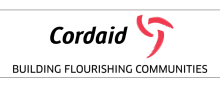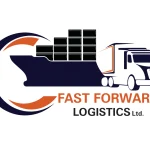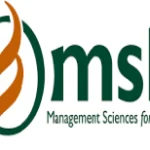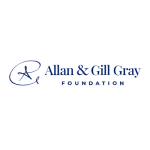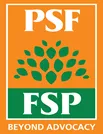Cordaid is an internationally operating value-based emergency relief and development organisation, working in and on fragility. We stand with those who are hit hardest by poverty and conflict. We support them in their struggle to move beyond survival and to fully participate in equitable and resilient societies.
Terms of Reference (ToR) for Conducting an Impact Assessment of Networking and Discussion Sessions for Agricultural Stakeholders known as Business to Business (B2B).
Organization background
CORDAID is a global, non-governmental development organization, whose mission is to end poverty and injustice. Cordaid works in the fields of climate resilience, food and income, private sector development. Our projects aim to strengthen households to generate more income from farming and improve their livelihoods.
Background and Context of the assessment
Under the Partnership Resilient and Inclusive Small Livestock Market (PRISM) The Business to Business (B2Bs) sessions were organized to facilitate networking and open discussions between key stakeholders in the small livestock value chain, including farmers, insurance providers, financial institutions, buyers, and feeds suppliers. These events were designed to provide a platform for value chain actors to exchange information, explore challenges, opportunities, identify potential solutions, and showcase relevant products and services available to enhance the productivity, resilience, and profitability of the agricultural sector.
In the light of the above Cordaid would like to undertake an impact assessment on the performed activity to evaluate how effectively these sessions achieved their goals, the nature of the interactions that took place, and any resulting changes in stakeholder behavior, relationships, and practices.
The overall objectives of the Impact Assessment
The objectives of this impact assessment is to assess the effectiveness of the sessions in:
- Fostering networking and collaboration among value chain actors.
- Addressing challenges faced by farmers and other value chain actors through discussion and the introduction of relevant products and services.
- Enhancing the awareness and knowledge of available financial and insurance products, input supply solutions, and market opportunities.
- Identifying any changes in value chain actors’ behavior, relationships, or practices as a result of the sessions.
Specific Objectives of the Assessment
The specific objectives of the impact assessment are to:
- Evaluate value chain actors’ engagement:Measure the level of engagement, participation, and satisfaction among the different value chain actors groups (farmers, insurance providers, financial institutions, buyers, and input suppliers).
- Assess Knowledge Gains within participated value chain actors:Determine whether the sessions contributed to increased awareness and understanding of available products and services, as well as challenges and solutions in the agricultural value chain.
- Evaluate Networking Outcomes among participated value chain actors:Analyze the extent to which the sessions facilitated meaningful networking opportunities, including the establishment of new partnerships, collaborations, or linkages among value chain actors such as market linkage, financial inclusion, veterinary services access and so on.
- Measure Behavioral Changes among participated value chain actors:Examine any changes in the behaviors or practices of the participants as a result of the sessions, such as adoption of new financial products, insurance uptake, or improved market linkages.
- Identify Barriers and Challenges:Identify any barriers or limitations that may have hindered the effectiveness of the sessions and propose recommendations for overcoming them in future events.
- Recommend Improvements:Provide actionable recommendations to improve future networking and discussion sessions based on the findings.
Scope of the Assessment
- Geographic Scope:The assessment is expected to cover 15 districts where sessions took place within the two past fiscal years (FY 22/23 and FY23/24). Districts include Nyaruguru, Nyamagabe, Gisagara, Ruhango, Burera, Musanze, Rulindo, Gicumbi, Huye, Rutsiro, Karongi, Nyamasheke, Ngororero, Gakenke, Nyabihu.
- Stakeholder Scope:The assessment will include all key participants namely farmers, insurance providers, financial institutions, buyers, and input suppliers, as well as any other relevant chain actors who participated in the sessions. Specifically, all 15 sessions were attended by 1,216 individuals in which 786 were smallholder farmers, 184 were veterinaries, 209 were staff from financial institutions, 23 were staff from insurance providers and 14 were government representatives. Women’s participation in these sessions stood at 40%, while youth participation was at 8%.
- Timeframe:The assessment will focus on the immediate to short-term impacts of the sessions, measuring changes that have occurred after the events up to date.
Key Research Questions
- What were the main outcomes of the sessions for each value chain actor group (farmers, insurance providers, financial institutions, buyers, input suppliers)?
- To what extent did the sessions meet the objectives of fostering networking, sharing challenges, and discussing solutions?
- How effective were the sessions in increasing value chain actors’ knowledge and understanding of available financial products, insurance schemes, input supplies, and market opportunities?
- Did the sessions result in any new partnerships, collaborations, or other forms of value chain actors’ engagement? And how was the effectiveness in terms of market access, financial linkages, insurance access, veterinary services access and so on?
- What specific behavioral changes, if any, have occurred as a result of the sessions (e.g., adoption of new products, services, or practices)?
- What were the main challenges encountered during the sessions, and how can these be addressed in future events?
- What recommendations can be made for improving future sessions to maximize impact and relevance for all value chain actors considering the value of money?
Methodology
The impact assessment will use a mixed-methods approach, combining both quantitative and qualitative data collection methods to provide a comprehensive analysis of the outcomes.
Quantitative Methods:
Surveys/Questionnaires:Structured surveys will be administered to participants (farmers, insurance providers, financial institutions, buyers, and input suppliers) to collect data on their satisfaction with the sessions, changes in their knowledge, new connections made, and any follow-up actions taken.
Qualitative Methods:
- Interviews:Semi-structured interviews will be conducted with key stakeholders (e.g., session organizers, industry experts, and selected participants) to gain deeper insights into the discussions and outcomes of the sessions.
- Focus Group Discussions (FGDs):Focus groups with participants from different stakeholder groups will explore in more detail the perceived value and outcomes of the sessions, including barriers to successful implementation of discussed solutions.
- Document Review:A review of session materials, reports, participant feedback forms, and any follow-up reports will be conducted to assess the content, delivery, and overall impact of the sessions.
Key Deliverables
The impact assessment will deliver the following outputs:
- Inception Report:A report detailing the methodology, timeline, and plan for data collection and analysis, including any specific tools to be used (e.g., survey questionnaires, interview guides).
- Data Collection Tools:The survey questionnaires, interview protocols, and focus group discussion guides that will be used to gather data from stakeholders.
- Draft Report:A draft impact assessment report presenting the findings, including key insights on the effectiveness of the sessions, any changes in stakeholder behavior, and identified barriers.
- Final Report:A comprehensive final report summarizing the findings, with actionable recommendations for improving future networking and discussion sessions.
- Executive Summary:A concise summary of the impact assessment findings and recommendations, suitable for dissemination to stakeholders.
Timeline
The impact assessment is expected to be completed within 6 weeks, starting 2nd December 2024, following the schedule outlined below:
- Week 1-2:Inception phase, including review of background materials, stakeholder identification, and development of data collection tools.
- Week 3-4:Data collection, including surveys, interviews, and focus group discussions.
- Week 5:Data analysis and report drafting.
- Week 6:Final report submission, including dissemination of results to key stakeholders.
The assessor qualification
To ensure the success of the impact assessment, the assessor should possess a combination of technical, methodological, and sector-specific expertise. Below are the key qualifications for an impact assessor:
- A master’s degree or higher in a relevant field such as Development Studies, Economics, Agricultural Economics, rural development or other relevant fields.
- A significant professional experience (at least 7 years) in conducting impact evaluations, particularly in agriculture, rural development, or financial inclusion sectors.
- Proven ability to engage with diverse groups of value chain actors such as farmers, financial institutions, insurance providers, and input suppliers. Experience in facilitating discussions, workshops, or networking events will be valuable.
- Direct experience in evaluating agricultural or rural development programs, especially those that involve market linkages, insurance, finance, and inputs, is highly recommended.
- Proven experience conducting both quantitative and qualitative impact evaluations using appropriate methodologies such as surveys, interviews, focus groups, and case studies.
- Proven expertise in agricultural finance, insurance, input supply, and market linkages to provide context and support analysis.
Ethical Considerations
- Informed consent will be obtained from all participants, ensuring they are aware of the purpose of the assessment and their right to confidentiality.
- All data collected will be treated confidentially, and participants’ anonymity will be preserved where appropriate.
- Participants will have the option to withdraw from the assessment at any time without any negative consequences.
Limitations
- The impact assessment will focus on short-term outcomes and immediate follow-up from the sessions and may not capture long-term impacts.
- There may be variability in participant responses, particularly with regard to self-reported behavioral changes, which may limit the accuracy of some findings.
Approval and Authorization
All deliverables are subject to approval by the Cordaid team before moving to the next step.
Proposal Submission
Assessors interested in doing this assignment are asked to submit a proposal no later than er than 22nd November 2024. A full Proposal should be submitted electronically only to the following email address apollinaire.nshimiyimana@cordaid.org and should follow below proposed structure.
Proposed structure of the technical proposal
Brief Description of the assessor
- A brief overview of the assessor, highlighting their qualifications, expertise, and experience relevant to the evaluation task. This section aims to establish the applicant’s credibility and suitability for the project. 1 page maximum.
- Declaration of potential conflicts of interest.
Background of the assessment
- Demonstrate the understanding of the assessment: Description of the context, background, and relevance of the assessment.
Objectives and Scope
- Clear statement of the assessment’s goals and specific objectives.
- Scope of work, including boundaries and deliverables.
Methodology/Approach
- Detailed explanation of the methods, techniques, and processes to be used in carrying out the assessment.
- This section should explain how the assessor intends to respond to the key assessment questions and provide justification for the chosen approach.
Work Plan/Timeline
- Outline of the key activities, milestones, and deliverables.
- A timeline showing the phases of the project and the estimated time for completion.
Team Composition
- Description of the team members, their roles, expertise, and relevant experience.
Budget and Resources
- A breakdown of the assessment costs, including personnel, materials, travel, and any other relevant expenses.
- Indicate Proposed payment installments and deliverables.
Appendices
- Additional information such as references, CVs, certification, registration certificate from RDB, proof of taxes payment and other relevant technical specifications.
Prepared by Mutsinzi JF Regis
MEL Advisor
Approved by Birasa Patrick
Country Manager
6/11/2024
Attachment
